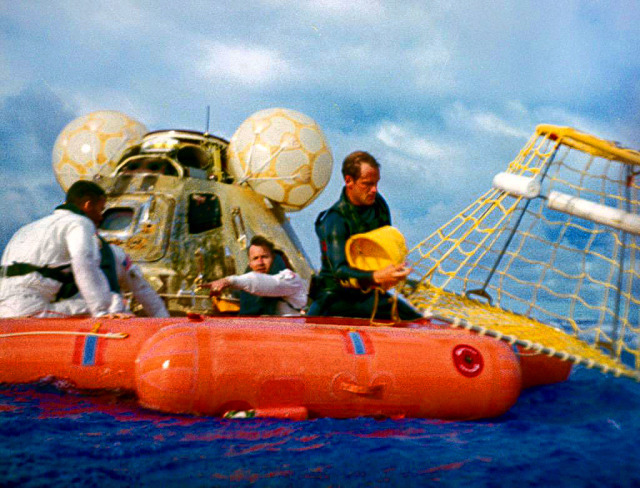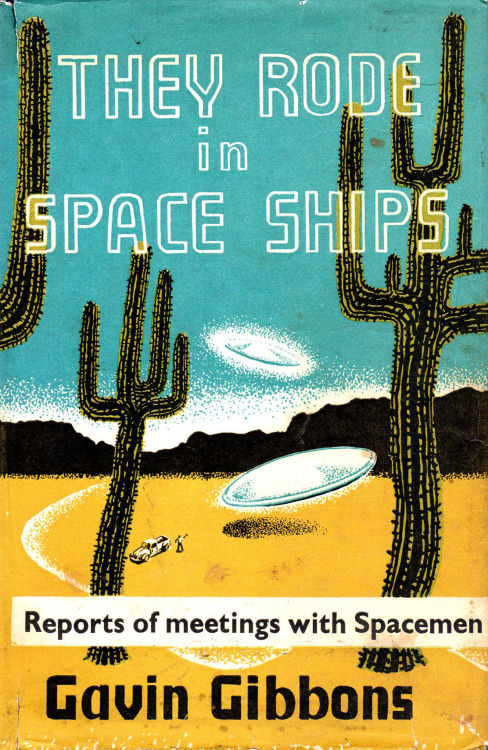#spacemen

The incredible rescue. The Command Module of Apollo 13 floats with astronauts James Lovell, Fred Haise & Jack Swigert catching their breaths. A damaged wire had ignited on the Service Module following a stir of the oxygen tanks. The explosion left the astronauts’ supply of oxygen venting out into space. The Lunar Module then became the lifeboat for the 3. It was designed to support 2 men on the moon for 2 days; Mission Control though worked around the clock to improvise & create new procedures to allow it to support 3 men for 4 days. Just incredible. As always, I recommend director Ron Howard’s classic ‘Apollo 13’ for your viewing pleasure to see the full story.

Splashing down. Astronauts Gus Grissom & John Young sit within their Gemini 3 capsule nicknamed ‘Molly Brown’ following splashdown of the first crewed mission of Project Gemini, March 1965. The pair had just completed 3 orbits about Earth over a near 5-hour period. G3 was the first US space mission with 2 astronauts & also the first in which thrusters were fired by the crew to change the size & shape of their orbit. This was an important step in spacecraft maneuverability essential for a potential future moon landing. Following G3, Mission Control moved from Cape Kennedy to Houston, Texas.

What’s for breakfast? The first American in space, Alan Shepard, joins Apollo 9 astronauts Rusty Schweickart, James McDivitt & David Scott during their training, Feb 1969. McDivitt had flown previously on Gemini 4; Scott on Gemini 8. It was Schweickart’s rookie flight. The main task of Apollo 9 was to test out & verify the Lunar Module’s abilities in space, including being able to dock with the Command Service Module. The trio spent 1,800 hours on mission specifics. Their hard work paid off as the 10-day mission successfully tested the full Apollo spacecraft.

Astronauts on a cloudy day. Alan Bean, Pete Conrad & Richard Gordon hop out of the shuttle bus & step towards the 363-foot tall Saturn V rocket in preparation for Apollo 12, Nov 1969. Conrad & Bean spent 31 hours on the lunar surface while Gordon orbited 45 times above in the Command Module. The spacecraft was nearly identical to that of Apollo 11 with the exception being that hammocks were added to the Lunar Module so that Bean & Conrad could rest more comfortably when not out moonwalking. The mission lasted a total of 10 days & 4 hours.

Currently seated, soon to fly. Pete Conrad & Richard Gordon take a load off their feet prior to their near 3-day Gemini 11 mission, Sept 1966. The pair performed the 1st ever direct-ascent rendezvous with an AGT (Agena Target Vehicle) as they docked with it just 94 minutes after launch (& during the 1st orbit). Gordon also performed a pair of EVAs on the mission for a total of 2 hours & 41 min. The duo went on to fly to the moon together during Apollo 12 in Nov 1969. Conrad became the 3rd human to walk on the lunar surface on the mission while Gordon orbited above in the Command Module. A historic pair of astronauts.

In the field today, on the moon tomorrow. Charlie Duke & John Young undertake geology training for Apollo 16 in Sudbury, Ontario, 07/71. The city in Northern Ontario, nicknamed ‘The Nickel City’, was chosen due to the area’s shatter cone formations. The pair landed in the Descartes Highlands upon the lunar surface in April the following year. They spent 71 hours on the moon & brought back ‘Big Mule’, for research; the largest moon rock collected during Project Apollo.

3 peas in a pod. Frank Borman sits in the commander’s seat to the left, with William Anders to the right & Michael Collins in the middle during flight simulator training for Apollo 8. Mr. Collins developed a back injury in 1968 which led to James Lovell replacing him on the 1st crewed flight to orbit the moon. All was not lost for Mike though as he was bumped back to Apollo 11 with Neil Armstrong & Buzz Aldrin for the first human landing on the moon. Not too bad of a second assignment.

